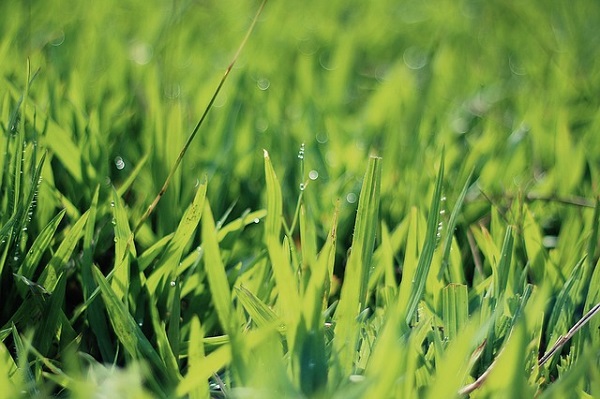
0800 377 7507
Get in touchHow to grow a lush green lawn
The British are amongst the most avid gardeners in the world and the lawn, no matter how big or small, is no exception. How to grow a lush green lawn and how to maintain it is often the subject of much discussion when the whether starts to turn for the better. As our lawns or areas of grass tend to form the centrepiece of our gardens, MOLLY MAID, the professional domestic cleaners, believe that it is important to treat our lawns with due respect. With the right care, tools and equipment they can be easily grown and maintained to provide a pleasant area, which can be used by the whole household for relaxing or playing.
Seed or turf?
The first decision is of course whether or not you are going to create a lawn from seed or turf whilst the second decision concerns the use of the lawn, which will determine the type of seed you need to consider. Ask yourselves these sorts of questions: What position is it in terms of shade or light; it is going to have to be hardwearing to deal with the stresses of pets and children? Or is it to be purely ornamental?
So, the advantages of using turf is that it comes with ready prepared grass to provide an instant lawn. However, this is a costlier option and you must be careful to select the right turf. Then of course, you will need to nurture it for some time after laying it to ensure successful establishment.
Growing a green lawn from seed also has many advantages, such as cost, access to different seed varieties to suit your lifestyle and also in being able to ensure that you sow a lawn free from weeds using a weed killer or by digging out the old lawn and replacing the lost soil to produce a level soiled area. The soil should be broken down with stones and other obstacles removed and if necessary a soil conditioner used to ensure the soil is fertile and in the best condition possible for new lawn establishment.
How to grow a lush lawn: Step One
The area should then be marked out in square metres. This is to help to ensure the correct seed rate is achieved. The seed should be sown as recommended on the packet along with lawn feed.
Once sown, the area should be protected from birds and other potential pests. Moisture is essential for effective germination so, depending on the weather conditions, watering may be needed for several days until the seed is established. This is a good reason why Spring is such an effective time to grow a lush, green lawn.
Feeding a lawn
Lawns need care and attention to keep them in perfect condition just like our homes say MOLLY MAID and if carried out regularly, this maintenance doesn’t have to take excessive time and use many products. A good feeding discipline is advisable to prevent pest and disease damage and also to keep it in peak condition.
Healthy lawn
Steps on how to grow a lush lawn include feeding it, which should be applied in both the Spring and the Summer. Many lawn feeds are now available which contain nutrients including fertilizers to promote healthy growth. Fertilisers contain nitrogen (N), phosphate (P) and potassium (K) and the correct ratio for good lawn growth is important. A single application will normally last for 8 – 12 weeks and should be applied then watered immediately to help it to work and also to prevent the lawn being scorched by the sun. If moss is a problem use a lawn feed complete with moss killer. Please also take care not to cover an area twice as this will over feed and can result in scorching.
Routine lawn care
Although water is essential to grow a lush lawn, once established there will be little need for regular watering even in times of drought – contrary to common belief, a ‘brown’ lawn will often recover. Cutting or mowing, however must be done regularly.
Mowing
Height: Regular mowing of a lawn will promote even growth and produce a lush lawn with increased growth from the base of the grass plants. This mimics the natural process of grazing by animals in bygone centuries. How often a lawn should be mown, depends on the stress that is put on it. Generally speaking, the more hardwearing a lawn needs to be, the longer it must be kept to prevent damage. This does not mean leaving it as long as meadow grass! A shorter lawn (ideally 1cm high) will create a more aesthetically pleasing look, but won’t survive high traffic.
To achieve a lush lawn, the new grass lawn should only be mowed when it reaches a height of 5cm. Care must be taken not to rip out the new seedlings so a rotary mower is recommended. The height of the grass can then be reduced to 2.5cm.
Frequency: Mowing 2–3 times per week can be justified in Spring and early Summer when grass is growing quickly. The choice of mower is paramount and careful consideration should be made to select the best solution for your lawn.
Direction: In order to encourage even growth, the direction of mowing should also be alternated. By continual mowing in one direction an uneven lawn will develop and uneven growth seen.
Grass Clippings: You might also be relieved to hear that it isn’t always necessary to remove all grass clippings when mowing and that by leaving the clippings on the lawn on 1 in 4 occasions will help to improve the condition of your lawn.
